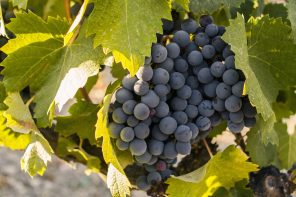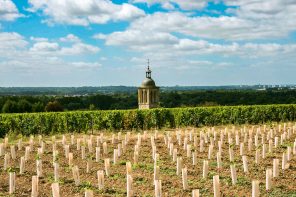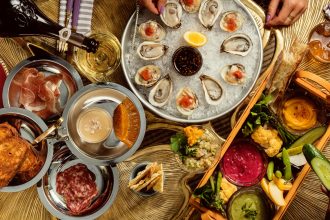In the world of northern Spain, Rioja tends to get all the love. However, look just a little further north and you’ll find yourself in the mecca of Spanish rosés – as well as quality, full-bodied reds (with a much lower price tag than their neighbors). Seated at the foot of the Pyrenées mountains, with ideal proximity to the Ebro River, is Navarra, Spain’s answer to all of your pink-drinking and robust-red slugging dreams.
Winemaking in Navarra dates back to 200 BC, when Spanish bodegas (wineries) were constructed by the conquering Romans. Fast-forward over 1,000 years, and the kingdom of Navarra remained powerful, maintaining a close relationship with their viticultural neighbor, France. At the turn of the 19th century, most vineyards, along with the rest of Europe, were destroyed, due to to the phylloxera epidemic. Navarra was devastated, losing almost 100 percent of its vines. Replanting and grafting took place, replenishing the lost vineyards, though a quantity over quality mentality began to dominate, leaving the region’s reputation to mass-produced, low-quality wine.
As of the late 20th century, winemaking mentality in Navarra began to shift. Quality took precedence over quantity, leading winemakers to focus on exporting wines that showcased the unique terroir of the region. Navarra’s continental climate gives way to long, hot summers and cold winters, with swift diurnal temperature swings. A range of altitudes provides texture and complexity to grapes, leading the way to layered, thought-provoking wines.
Navarra is split into five sub-regions: Valdizarbe, Tierra Estella, Ribera Alta, Baja Montana and Ribera Baja. Red grape varieties dominate, with 66 percent of vineyard plantings dedicated to Garnacha and Tempranillo. Unlike Rioja, minimal Cabernet Sauvignon and Merlot plantings exist, as well as Rioja counterparts Mazuelo and Graciano. White grape varieties are pretty rare, though when planted, include Viura, Chardonnay and Garnacha Blanca. Soil types range across the region, though generally limestone, chalk and sand prevail.
Garnacha, specifically, has made a name for itself within the boundaries of the Navarra DO. When produced as a rosado, the wines are light and bright, with zesty acidity and a strong backbone. When vinified for red wine, Garnacha can produce an array of styles, with light, high-acid expressions coming from the north, and more supple, savory expressions coming from the south. Though whites are few and far between, these fuller-bodied, rich blends are extremely satisfying, coming to life alongside light white meat and seasoned vegetable dishes.
While Beaujolais and Zinfandel may reign king on the Thanksgiving Day table, wines from Navarra most certainly have a well-deserved place. Whether it’s pairing a zippy rosé with tart cranberry sauce, coupling high-acid Garnacha with juicy turkey, or complementing creamy mashed potatoes with an equally mouth-filling white, wines of Navarra certainly rival even the most classic of Thanksgiving Day wine pairings.
For a versatile region that belongs on your feast table, check out the wines from northern Spain’s best kept secret! Your wallet will thank you.








